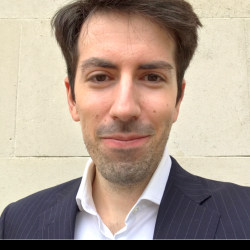Research
Vascular Network Formation via 3D Printing and Cell-Based Approaches
One of the primary objectives of tissue engineering is the in vitro generation of large tissues and organs. However an unsolved problem exists concerning vascular network generation, preventing their formation. In this project, we use 3D printing technology for the formation of large-scale vessels and cellular co-culture techniques for the formation of capillary structures, in fibrin and collagen hydrogels. The goal here is the fabrication of a full vascular system which is three-dimensional, hierarchical, and perfusable, and thus can support high densities of cells.
Bioengineering of the Bile Duct
In collaboration with partners at the Stem Cell Institute and the Department of Surgery, we work towards the goal of fabricating artificial bile ducts, as a treatment for bile duct disorders such as biliary atresia and ischemic dominant strictures. Thus we fabricate densified collagen tubes, which are seeded with primary human cholangiocyte organoids and surgically implanted as a replacement for the common bile duct.
Magneto-mechanical Actuation of Ferromagnetic Fibre Networks
This project concerns the development of capillary vasculature within a magneto-active bone scaffold, based on interconnected networks of ferromagnetic fibres. The scaffold is incorporated in the proximal region of the implant and can be actuated in vivo by an external magnetic field of clinical magnitude, applying strains to in-growing bone tissue. Thus the aim of this project is to establish the vascularisation potential of these magneto-active scaffolds, using networks infiltrated with fibrin gel to model the wound healing environment.
Collaborators
Prof Ludovic Vallier (Wellcome Trust–Medical Research Council Stem Cell Institute, Cambridge Stem Cell Institute, Anne McLaren Laboratory, University of Cambridge, Cambridge)
Dr Fotios Sampaziotis (Department of Surgery, University of Cambridge and NIHR Cambridge Biomedical Research Centre, Cambridge)
Dr Kourosh Saeb-Parsy (Department of Surgery, University of Cambridge and NIHR Cambridge Biomedical Research Centre, Cambridge)
Dr Mark A. Birch (Division of Trauma and Orthopaedic Surgery, Addenbrookes Hospital, Cambridge)
Dr Roger A. Brooks (Division of Trauma and Orthopaedic Surgery, Addenbrookes Hospital, Cambridge)
Biography
Dr Justin completed his PhD, on vascular network formation, with Athina Markaki (Department of Engineering and Hughes Hall, University of Cambridge). He previously studied for an MPhil in Nanotechnology Enterprise (Hughes Hall, University of Cambridge) and an MSci in Physics (Imperial College London).
Publications
A.W. Justin, K Saeb-Parsy, AE Markaki, L. Vallier, F. Sampaziotis (2017), "Advances in the Generation of Bioengineered Bile Ducts", BBA - Molecular Basis of Disease, in press, https://doi.org/10.1016/j.bbadis.2017.10.034.
F. Sampaziotis, A.W. Justin et al. (2017), "Reconstruction of the Mouse Extrahepatic Biliary Tree using Primary Human Extrahepatic Cholangiocyte Organoids", Nature Medicine, 23(8), 954-963.
A.W. Justin, R.A. Brooks, A.E. Markaki (2016), "Multi-casting Approach for Vascular Networks in Cellularized Hydrogels", Journal of Royal Society Interface, 13: 20160768.
A.E. Markaki and A.W. Justin (2014), "Magneto-Active Scaffold for Stimulation of Bone Growth”, Invited Review, Special Issue on Smart Materials, Materials Science & Engineering, 30 (13a), pp. 1590-1598.
Reppy, J. D., Mi, X., Justin, A., & Mueller, E. J. (2012). Interpreting torsional oscillator measurements: Effect of shear modulus and supersolidity. Journal of Low Temperature Physics, 168(3-4), 175-193.

